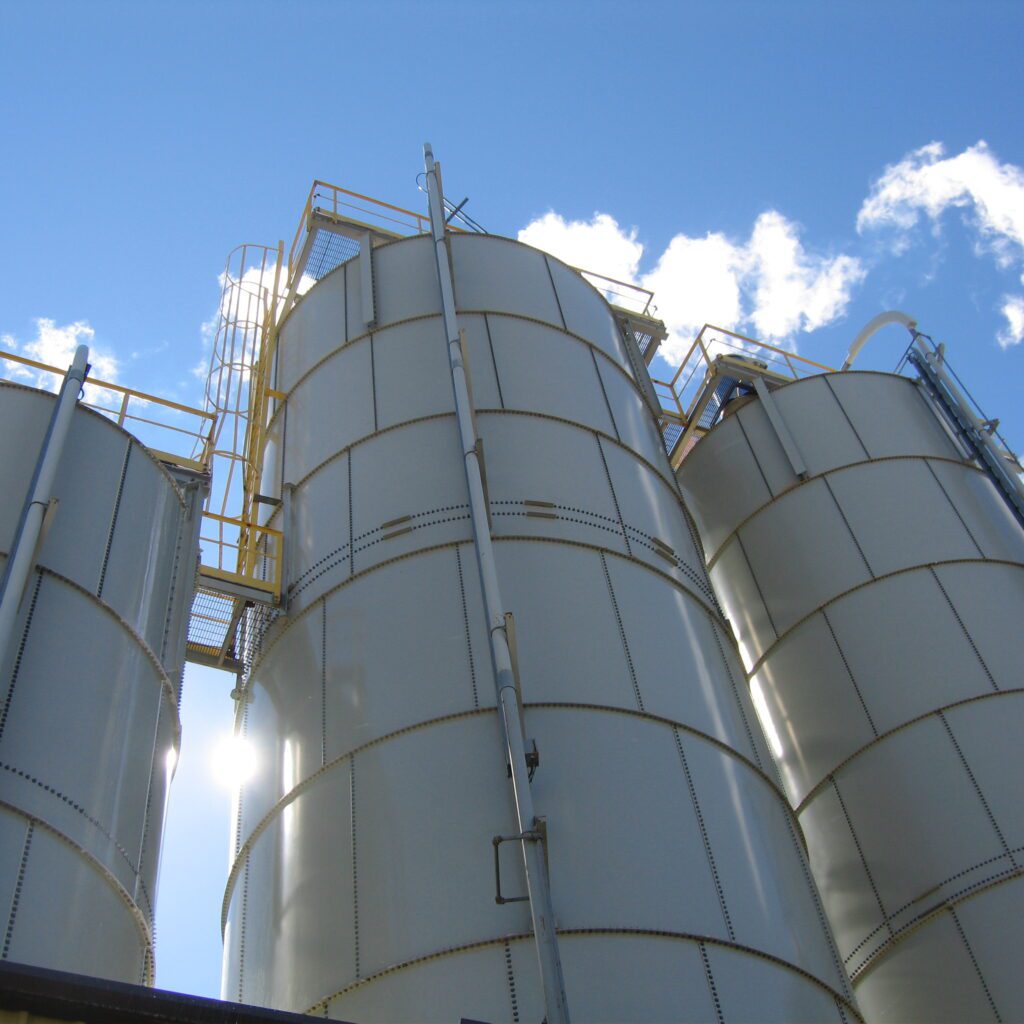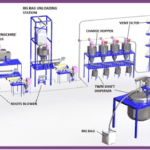STORAGE SILO
A storage silo, also known as a bulk storage bin or hopper, is a large container used for the storage of bulk materials such as grains, powders, granules, cement, coal, or other dry or liquid substances. Silos are commonly used in industries such as agriculture, food processing, mining, chemical manufacturing, and construction.

Key features and components of a storage silo include:
Structure: Silos are typically cylindrical or rectangular structures made of steel, concrete, or sometimes reinforced plastic. The choice of material depends on factors such as the stored material’s characteristics, storage capacity, and environmental conditions.
Capacity: Silos come in various sizes, ranging from small-scale silos used on farms to large industrial silos with capacities of thousands of metric tons. The capacity is determined based on the volume of material that needs to be stored and the required storage duration.
Access Points: Silos have access points for material loading and unloading. These can include fill pipes or conveyors for material intake, as well as discharge outlets or chutes for material retrieval. The access points are designed to facilitate efficient material flow in and out of the silo.
Ventilation and Aeration Systems: Proper ventilation and aeration systems are essential for maintaining the quality and condition of the stored material. These systems prevent moisture buildup, condensation, or spoilage by regulating airflow and temperature within the silo.
Level Sensors and Monitoring Systems: Silos are often equipped with level sensors and monitoring systems to measure and control the material level inside the silo. This information helps manage inventory, plan material usage, and prevent overfilling or emptying issues.
Safety Features: Safety considerations in silo design include structural stability, earthquake resistance, fire protection measures, and measures to prevent dust explosions or other hazards. Pressure relief devices, fire suppression systems, and proper grounding are examples of safety features that may be incorporated.
Material Handling Equipment: Silos are typically integrated with material handling equipment such as conveyors, bucket elevators, or screw conveyors to facilitate the transfer of material to and from the silo.
Proper design, construction, and maintenance of silos are crucial to ensure the safety of personnel, prevent material degradation, and optimize storage efficiency. Compliance with industry standards and regulations is important to meet safety requirements.
KEY BENIFITS
- Increased capacity
- Protection from the elements
- Pest control
- Improved quality

